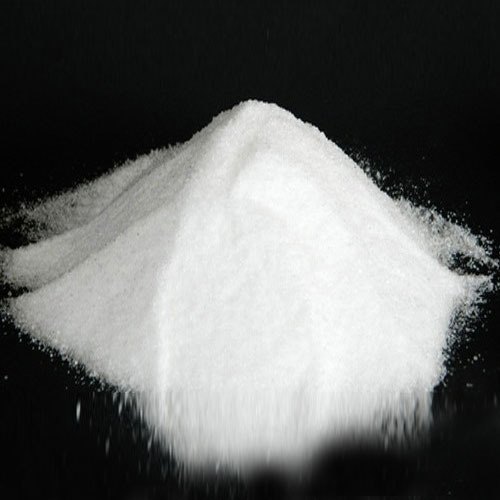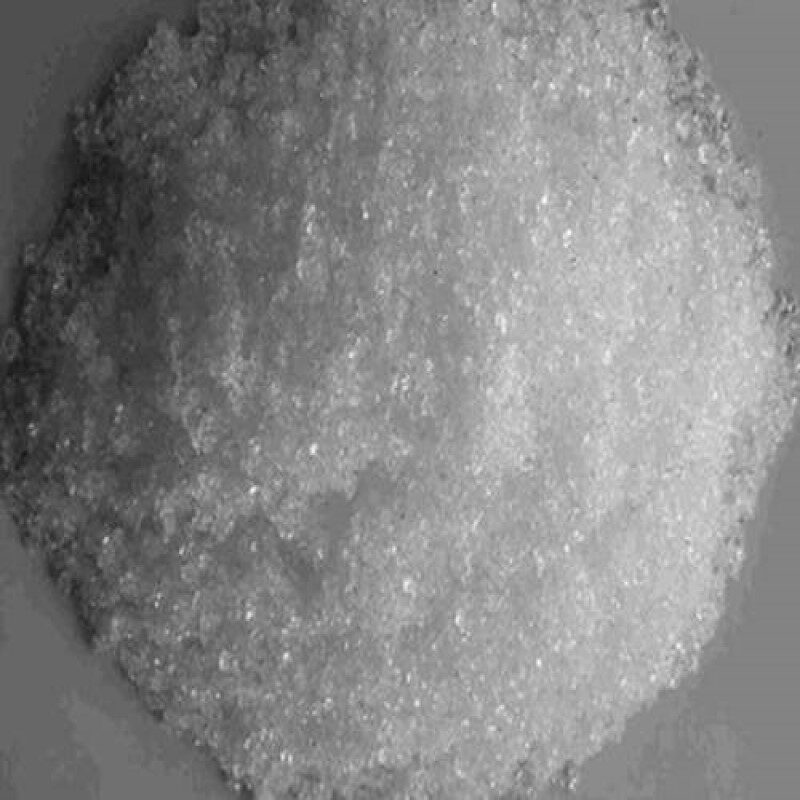Description
Remarks: The sample complies as per above Specification.
Uses: PVA is used in sizing agents that give greater strength to textile yarns and make paper more resistant to oils and greases. It is also employed as a component of adhesives and emulsifiers, as a water-soluble protective film, and as a starting material for the preparation of other resins. In cosmetics and personal care products, Polyvinyl Alcohol is used in a wide range of products, including makeup, skin care products and facial masks. Polyvinyl Alcohol increases the thickness of the lipid (oil) portion of cosmetics. It may also be used as a film former or a binder. PVA is a water soluble polymer used widely in adhesives, paints, sealants, coatings, textiles, plastics, etc. The polymer is normally supplied in powder form and several grades are available with varying viscosity and solubility characteristics. Polyvinyl alcohol (C2H4O)x is a water-soluble synthetic polymer. It is used to increase viscosity in pharmaceuticals and as a lubricant and protectant in ophthalmic preparations. Polyvinyl alcohol is often found in over-the-counter eye redness and eye lubricant (“Tears”) eye drops.
Packing: 25 kg HDPE Bags/HDPE Drum.
For AMIZARA SPECILITY CHEMICALS LLP
MSDS
Polyvinyl Alcohol SDS, Safety Data Sheet MSDS Sheet, Material Safety Data Sheet
Section 1:Product DESCRIPTION
| Product Name & Other Names |
Polyvinyl Alcohol or Poly(Vinyl Alcohol) or PVA or PVOH |
| CAS No |
9002-89-5 |
| EINECS EC Number |
209-183-3 |
| Molecular Weight |
|
| Molecular Formula |
[-CH2CHOH-]n or C2H4O)x |
| Relevant uses and uses advised against (if any) |
Industrial Manufacturing. |
| Supplier |
As per the letterhead. |
SECTION 2 : Hazards Identification
GHS, Globally Harmonized System Classification in accordance with 29 CFR 1910
| Hazard Class and Category Code(s), Regulation |
(EC) No 1272/2008 (CLP) |
| Not a hazardous substance or mixture according to Regulation |
(EC) No. 1272/2008 |
| This substance is not classified as dangerous according to Directive |
67/548/EEC. |
Labeling as per GHS & Regulation EC 1272/2008 (CLP) & GHS
| Signal Words |
None |
| Hazards not otherwise classified (HNOC): |
May causes mild skin irritation.
May causes mild eye irritation, if exposed in large quantity. |
Precautionary statements
| P261 |
Avoid breathing dust/fume/gas/mist/vapors/spray. |
| P262 |
Do not get in eyes, on skin, or on clothing. |
| P281 |
Use personal protective equipment as required. |
| P302+P352 – IF ON SKIN |
Wash with plenty of soap and water. |
| P303+P361+P353 – IF ON SKIN (or hair) |
Remove/Take off immediately all contaminated clothing. Rinse skin with water/shower. |
| P304 + P340 – IF INHALED |
Remove victim to fresh air and keep at rest in a position comfortable for breathing. |
| P305 + P351 + P338 – IF IN EYES |
Rinse cautiously with water for several minutes.
Remove contact lenses, if present and easy to do. Continue rinsing. |
| P337+313: |
If eye irritation persists get medical advice/attention. |
Section 3: Composition / Information on Ingredients
| Product Name & Other Names |
Polyvinyl Alcohol or Poly(Vinyl Alcohol) or PVA or PVOH |
| CAS No |
9002-89-5 |
| Molecular Weight |
[-CH2CHOH-]n or C2H4O)x |
SECTION 4: First Aid Measures
Always get medical attention after the first aid is over.
| Emergency and First Aid Procedures: |
|
| Eyes |
Flush with water for at least 15 minutes, raising and lowering eyelids
occasionally. Get medical attention if irritation persists. |
| Skin |
Thoroughly wash exposed area for at least 15 minutes. Remove contaminated clothing. Launder contaminated clothing before reuse.
Get medical attention if irritation persists. |
| Ingestion |
If Polyvinyl Alcohol is swallowed, if conscious, give plenty of water. Immediately call a physician.
Never give anything by mouth to an unconscious person |
| Inhalation |
Remove to fresh air. Give oxygen if breathing is difficult; give artificial respiration if breathing has stopped.
Get medical attention. |
SECTION 5 : Fire Fighting PROCEDURES
| Extinguisher Media |
Use media suitable to extinguish surrounding fire. Use water spray, alcohol-resistant foam, dry chemical, or carbon dioxide. |
| Flammable Limits in Air % by Volume |
N/A |
| Special Fire fighting Procedures |
Firefighters should wear full protective equipment and NIOSH approved self-contained breathing apparatus. |
SECTION 6: Accidental Release Measures
| Personal precautions, protective equipment and emergency procedures |
Avoid breathing dust/fumes/gas/mist/vapors/spray. Use individual protective equipment (waterproof boots, suitable protective clothing, safety glasses, etc.).
Restrict unprotected personnel from the area. Prevent any contact with hot surfaces. Do not approach facing the wind. Do not touch the spilled material. |
| Environmental precautions |
Do not let the product enter drains, soil, or water sources. |
| Methods and materials used for containment Cleanup procedures and Storage |
Contain spilled material. Do not let the product enter drains. Use a shovel to put the material into a convenient waste disposal container.
Finish cleaning by spreading water on the contaminated surface and allow evacuating as per law. |
SECTION 7:SPECIAL PRECAUTIONS
| Precautions for safe handling |
Apply according to good manufacturing and industrial hygiene practices. Ensure proper ventilation. In case of insufficient ventilation, wear suitable respiratory equipment.
Wash thoroughly after handling. Do not drink, eat, or smoke while handling. Avoid contact with skin, eyes, and clothing.
Minimize dust generation. Avoid breathing dust/fumes/gas/mist/vapors/spray. Avoid contact with eyes, skin, and clothing.
Keep container tightly closed. Avoid ingestion and inhalation.
Use individual protective equipment (waterproof boots, suitable protective clothing, safety glasses, etc.). Prevent any contact with hot surfaces. |
| Conditions for safe storage, including any incompatibilities |
Store in cool, dry, and ventilated area away from heat sources and protected from sunlight in tightly closed original container.
Keep air contact to a minimum. Store protected from heat, sparks and ignition sources and incompatible materials.
Avoid contact with skin and eyes. Avoid inhalation of dust/mist/vapor.
Do not store with incompatible materials like strong oxidizing agents, strong acids, and bases. |
SECTION 8:SPECIAL PROTECTION INFORMATION
| Respiratory Protection (Specify Type) |
None needed under normal conditions of use with adequate ventilation. NIOSH approved equipment should be worn if PELs are exceeded. |
| Ventilation System |
A system of local and/or general exhaust is recommended to keep employee exposures as low as possible.
Local exhaust ventilation is generally preferred because it can control the emissions of the contaminant at its source, preventing dispersion of it into the general work area. |
| Personal Respirators (NIOSH Approved) |
For conditions of use where exposure to dust or mist is apparent and engineering controls are not feasible, a particulate respirator may be worn.
For emergencies or instances where the exposure levels are not known, use a full-face positive-pressure, air-supplied respirator. |
| Skin Protection |
Wear protective gloves and clean body-covering clothing. |
| Eye Protection |
Use chemical safety goggles and/or full face shield where dusting or splashing of solutions is possible. Maintain eye wash fountain and quick-drench facilities in work area. |
| Other Control Measures |
Maintain good housekeeping in work area. Dust deposits on floors and other surfaces may pick up moisture and cause the surfaces to become slippery and present safety hazards.
Handle in accordance with good industrial hygiene and safety practice. Wash hands after handling. |
SECTION 9:PHYSICAL DATA
| Appearance |
Solid material granules, crystals or powder. |
| Odor |
Odor not defined. |
| Odor threshold |
Not available. |
| pH |
5-7 at 4% water solution. |
| Relative density |
1.19 to 1.31 |
| Melting Point |
200C – lit. |
| Boiling Point: |
Decomposes between 200-250C |
| Flash point |
Not available. |
| Auto-ignition temperature |
Not available. |
| Decomposition temperature: |
Not available |
| Upper/lower flammability or explosive limits |
Not available. |
| Vapor pressure |
Not available. |
| Vapor density: |
Not available. |
| Evaporation rate |
Not available. |
| Flammability (solid, gas) |
Not available. |
| Partition coefficient:n-octanol/water |
Not available. |
| Solubility(ies) |
Not available. |
| Viscosity |
Not available. |
| Molecular Formula |
[-CH2CHOH-]n or C2H4O)x |
SECTION 10. Stability and Reactivity
| Stability |
Polyvinyl Alcohol is stable |
| Conditions to Avoid |
Heat, humidity, Dust generation. |
| Incompatibility (Materials to Avoid) |
Strong oxidizing and reducing agents, Strong acids and bases. |
| Hazardous Decomposition Products |
Carbon monoxide, carbon dioxide |
| Hazardous Polymerization |
Will not occur |
SECTION 11:TOXICITY DATA
Acute toxicity:
| LD50 Oral – rat |
20.000 mg/kg |
| LD50 Dermal – rat |
20.000 mg/kg |
| Carcinogenicity |
No component of this product present at levels greater than or equal to 0.1% is identified as possible or confirmed human carcinogen by IARC, ACGIH, OSHA and NTP. |
| Teratogenic Effects |
Not available. |
| Mutagenic Effects |
Not available. |
| Developmental Toxicity: |
Not available. |
| Reproductive Effects |
No information available. |
SECTION 12. Ecological DATA
| Toxicity to fish |
LC50 >1000mg/liter over 48 hours exposure on killfish. |
| Toxicity: |
Avoid release into the environment. Runoff from fire control or dilution water may cause pollution. |
| Results of PBT and vPvB assessment |
This substance/mixture contains no components considered to be either persistent, bioaccumulative and toxic (PBT), or very persistent and very bioaccumulative (vPvB) at levels of 0.1% or higher. |
SECTION 13. Disposal INFORMATION
| Waste Disposal Methods |
Dispose Polyvinyl Alcohol in accordance with all applicable Federal, State and Local regulations. |
SECTION 14. Transport Information
| DOT USA & ADR/RID: |
Not regulated |
| IMDG |
Not regulated. |
| IATA |
Not regulated |
SECTION 15. Regulatory Information
USA:
| Section 355 (extremely hazardous substances) |
Substance is not listed. |
| Section 313 (Specific toxic chemical listings) |
Substance is not listed. |
| TSCA (Toxic Substances Control Act) |
Substance is listed. |
Proposition 65
| Chemicals known to cause cancer |
Substance is not listed. |
| Chemicals known to cause reproductive toxicity for females |
Substance is not listed. |
| Chemicals known to cause reproductive toxicity for males |
Substance is not listed. |
| Chemicals known to cause developmental toxicity |
Substance is not listed. |
SECTION 16:ADDITIONAL INFORMATION
Disclaimer:
Our company provides this Polyvinyl Alcohol MSDS information sheet contained herein in good faith but makes no representation as to its comprehensiveness or accuracy. This Polyvinyl Alcohol SDS is intended only as a guide to the appropriate precautionary handling of the material by a properly trained person using this product. Individuals receiving the information must exercise their independent judgment in determining its appropriateness for a particular purpose.




